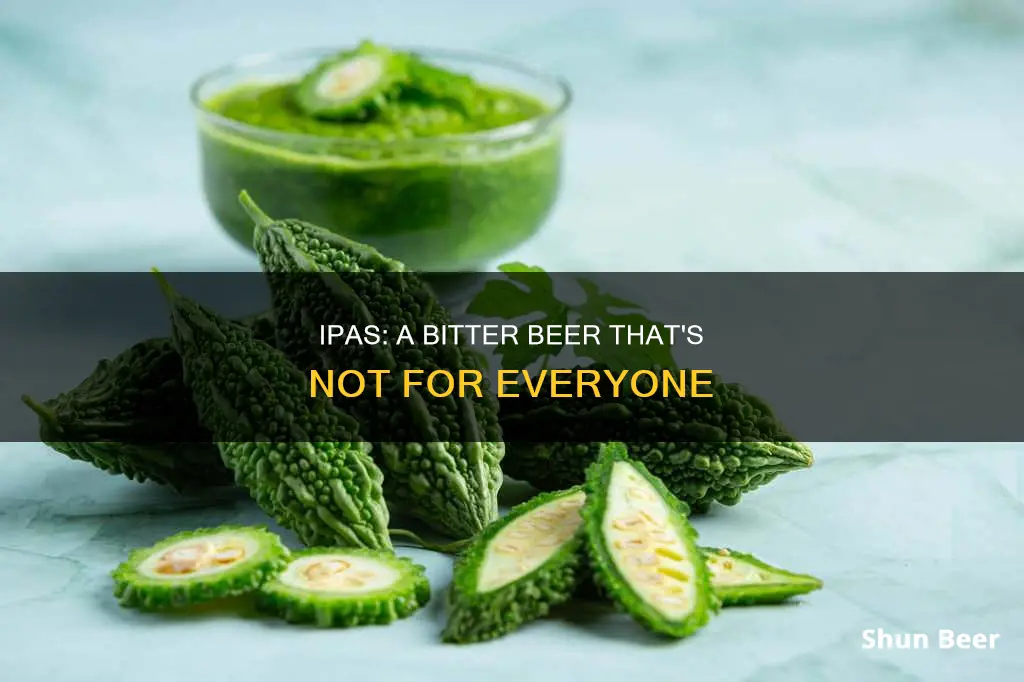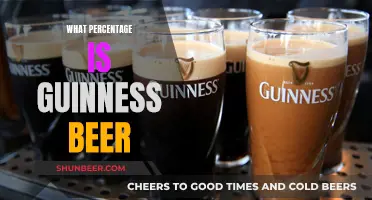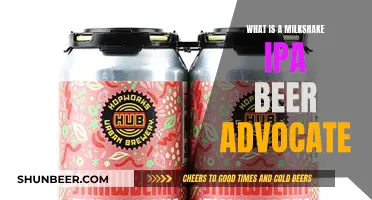
India Pale Ales (IPAs) are the most popular craft beer style in America. However, some people dislike them due to their bitterness, heavy and bloating nature, fruity taste, or high price. Others may not like IPAs because they think all IPAs taste the same, or that they don’t like the taste of beer in general. Some also believe that IPAs specifically lead to hangovers.
| Characteristics | Values |
|---|---|
| Taste | Too bitter, too sweet, too strong, too filling, too expensive |
| Aroma | Musty, grassy, like flowers, like pine resin, too hoppy |
| Presentation | Too hazy, too juicy |
| ABV | Too high |
| Allergies | Allergic to hops |
What You'll Learn

The taste and smell
The smell and taste of IPAs are a common reason why people dislike this style of beer. The strong, musty, grassy, and piney odour of IPAs is often off-putting to people, who compare it to a Christmas tree that has drenched itself in expired Pine-Sol or a rotting corpse covered in taxi-cab air fresheners. The taste is often described as even worse than the smell, with people describing it as bougie garbage water, like drinking a pine tree, or like a Christmas tree that has been soaked in detergent.
The bitterness of IPAs is also a common reason for people's dislike of the beverage. The "bitter is better" era of craft brewing has left a negative impression of IPAs on many drinkers, who associate the style with overly bitter and ruinous flavours. The high International Bitterness Units (IBUs) of IPAs, which can range from 75-100 IBUs for typical IPAs to 1000 IBUs for the Mikkeller IPA, can be overwhelming and unpalatable to many.
However, it is worth noting that the IPA style has evolved and diversified over the years, and not all IPAs are overly bitter. The New England-style or hazy IPAs, for example, are known for their smoother mouthfeel, more balanced flavours, and emphasis on aroma rather than bitterness. These IPAs may still have some bitterness, but the more balanced flavours and smoother texture make them more accessible to those who dislike overly bitter beers.
Additionally, the hops used in IPAs can contribute a range of unique flavours and aromas beyond just bitterness. Modern IPAs may feature tropical, citrusy, herbal, earthy, or floral notes, depending on the variety of hops used. For example, the Threes Brewing's Unreliable Narrator IPA has pure aromas and flavours of oranges, mangos, and peaches, while the Alpine Duet IPA features distinct florality from the use of Amarillo and Simcoe hops.
While the strong odour and bitter flavour of traditional IPAs can be off-putting to many, the diverse world of IPAs today means that there may be an IPA out there to suit different taste preferences. Whether you prefer more subtle and nuanced flavours or enjoy the bold and punchy profiles that IPAs can offer, exploring different varieties and styles of IPAs may help you discover one that aligns with your taste and smell preferences.
Guinness Beer: Healthy or Harmful?
You may want to see also

The high ABV
IPAs tend to have a higher alcohol content than other beers, with some IPAs reaching ABV levels of 10% and above. This means that a single IPA can affect your abilities after just one glass, and drinking one can leave you with a terrible hangover the next day.
Additionally, the high ABV of IPAs can contribute to their high price. IPAs tend to be more expensive than other beers, and the higher alcohol content is often cited as a reason for this. This can be frustrating if you are looking for a more affordable option or if you prefer the taste of less strong beers.
Finally, the high ABV of IPAs can affect your enjoyment of the beer. Some people may find that the higher alcohol content of IPAs interferes with their ability to taste and appreciate the complex flavors that IPAs are known for. Additionally, the high ABV can make IPAs less refreshing, especially if you are looking for a casual or easy-drinking beer.
The Guinness Toucan: A Bird, A Beer, A Brand
You may want to see also

The price
One of the main factors influencing the price of IPA beers is their alcohol content. IPA beers typically have a higher alcohol content compared to regular beers, which is reflected in their higher prices. The higher alcohol content contributes to a more intense drinking experience and can impact how quickly the beer is consumed. This was highlighted by a comment from a consumer who noted that they can drink 10 normal beers and still feel fine the next day, but a single IPA would leave them feeling bloated and uncomfortable.
Another factor that affects the price of IPA beers is the use of specific ingredients, particularly hops. Hops are a key ingredient in IPA beers and can be quite expensive, especially when using certain varieties or seeking out rare and unique hops. The type of hops used can significantly impact the flavor and aroma of the beer, with some hops being more sought-after than others. This can drive up the cost of production and, consequently, the price of the final product.
Additionally, the marketing and branding strategies employed by breweries can also influence the price of IPA beers. Some breweries create limited releases, exclusive collaborations, or hyped-up drops, generating a sense of exclusivity and demand. This can lead to higher prices as consumers are willing to pay a premium for these exclusive offerings. The packaging and presentation of IPA beers may also contribute to the overall cost, as breweries invest in eye-catching designs and unique branding to stand out in a competitive market.
It is worth noting that the price of IPA beers can vary depending on the region, the specific brewery, and the distribution channels. Some IPA beers may be more affordable than others, depending on these factors. However, the general perception of IPA beers as expensive or overpriced persists among consumers who feel that the cost does not always align with their personal taste preferences or drinking habits.
While the price of IPA beers may be a concern for some, it is important to consider the various factors that contribute to the cost. The higher alcohol content, the use of specific ingredients like hops, and the marketing strategies employed by breweries all play a role in determining the final price. Ultimately, the decision to purchase IPA beers despite their price comes down to individual preferences, and there are alternative beer options available for those who find the cost prohibitive.
Guinness Beer: A Protein-Rich Brew?
You may want to see also

The association with toxic masculinity
The IPA has become a symbol of toxic masculinity. Its origin story is rooted in oppression and colonialism, with British soldiers drinking IPAs in India, but locals not being allowed to drink or enter bars that served them. This history of exclusion has been whitewashed, with romantic images of sipping beers in a tropical climate, and names, taglines, and turbans on labels that foster faux nostalgia.
The IPA's association with toxic masculinity was further exacerbated by aggressive and arrogant marketing campaigns that targeted young white men. For example, the marketing copy for Stone Brewing's Arrogant Bastard Ale reads: "It is quite doubtful that you have the taste or sophistication to be able to appreciate an ale of this quality and depth." This type of marketing contributed to an element of toxic dude-ness in IPA connoisseurship, where men would peacock their bitterness tolerance and showcase their tolerance as a status symbol.
The haze craze, which began with the release of The Alchemist's Heady Topper, further amplified the association between IPAs and toxic masculinity. The hazy IPA was highly Instagrammable, and its limited availability fueled a new kind of cringeworthy behavior. Guys would pay people to wait in line to get the latest buzzy IPA, which they would then flaunt on Instagram as a status symbol. The message was clear: you had money to pay a line-sitter or buy upcharged beer, and you had superior taste in beer.
The IPA's association with toxic masculinity is not just about the beer itself, but also the culture that surrounds it. The "IPA Guy" is often associated with fist-pumping bros who prove their masculinity by chugging bitter IPAs or flexing their hypebeast prowess with Instagram shots of limited-release brews. This toxic behavior is fueled by a desire to showcase superiority and exclusivity, and it has contributed to the negative perception of IPAs as a symbol of toxic masculinity.
Beer, Sangria, and IPAs: What's the Difference?
You may want to see also

The culture surrounding IPAs
The India Pale Ale (IPA) is the world's most popular style of craft beer. Its popularity is driven by a combination of cultural and historical factors, as well as its unique flavour profile.
IPAs were originally an export beer shipped to India, which was under the control of the British East India Company until 1858. The beer was popular among the landed gentry and European settlers in India, and its distinctive flavour was influenced by the conditions of the voyage. Early IPAs were slightly higher in alcohol content than other beers, with fewer residual sugars, and a heavy dose of hops.
The IPA's association with the British Empire and far-flung destinations like India has contributed to its allure. The name evokes images of tall ships and exotic locales, and the beer's bitter, hoppy, fruity, and high-mineral content offers a sense of adventure in every pint. The IPA's historical role in shaping British brewing history also adds to its cultural significance.
In the 21st century, the IPA has become a symbol of the craft beer movement, particularly in North America. The style is well-suited to showcasing the intense flavours and aromas of American hops, and brewers and drinkers alike have embraced the variety of hop-forward IPAs. The cultural association with craft beer and small businesses has further fuelled the IPA's popularity.
The IPA's versatility and adaptability have also contributed to its cultural significance. The style has inspired a range of variations, including the New England IPA (hazy and juicy with a smooth mouthfeel), the Black IPA (with a darker malt flavour), and the Brut IPA (crisp and dry). The Double IPA, with its higher alcohol content and richer hop character, has gained a following among those seeking a stronger, more intense experience.
The IPA's cultural impact extends beyond its flavour and history. The beer has become a symbol of coastal regions, particularly the West Coast of the United States, and carries a certain status as a craft beer icon. The variety of IPA styles and the creativity of brewers worldwide have solidified the IPA's place in the cultural landscape of beer.
The Intriguing World of Hoppy IPAs: A Beer Enthusiast's Guide
You may want to see also
Frequently asked questions
The most common reason people dislike IPAs is their bitterness. If you are sensitive to bitter tastes, you may want to try a less bitter sub-style, such as a New England or English IPA.
IPAs are full-bodied ales with complex flavour and aroma profiles and hop oils, which can cause a bloated feeling in your stomach. If you want to avoid this feeling, you could try a Session IPA, which is less alcoholic and less filling.
IPAs tend to have higher levels of alcohol than other beers, as well as a greater concentration of hop oils, additional yeast and gluten, which may trigger a reaction and cause a hangover.
IPAs require more attention to detail, a diverse pool of ingredients, and sometimes more time to produce, which can drive up the price.







